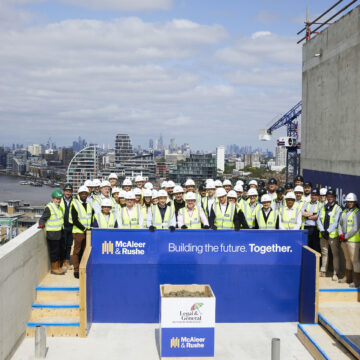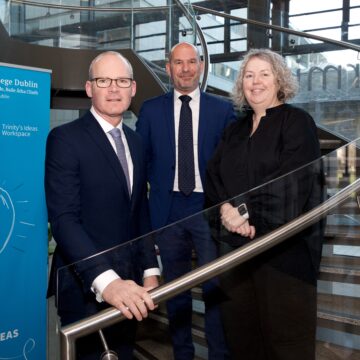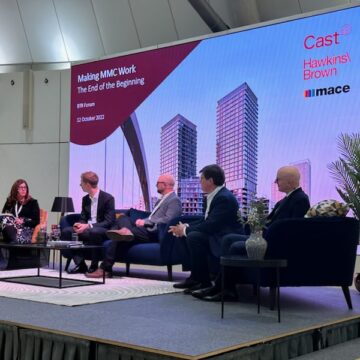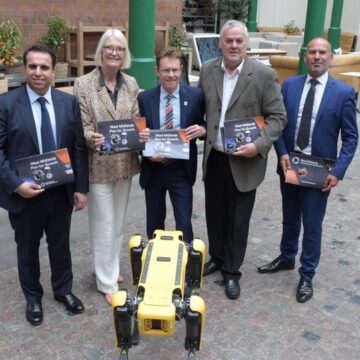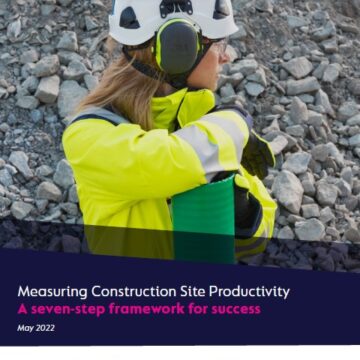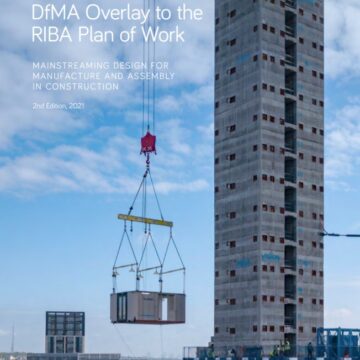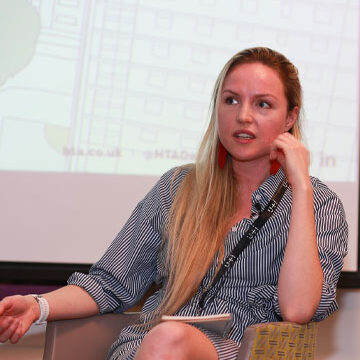Any quick scan of today’s media seems to be flooded with stories of medical, transport and financial sector technology surging ahead, yet little seems to relate to the construction industry.
The government has committed a large part of their first months in Parliament to addressing Britain’s housing crisis, with house building on the political agenda in a way not seen in decades. However, to support our ambitions for new homes and other infrastructure, and the step-change increase in construction activity that goes with that, we need to fix entrenched issues around skills constraints, organisational models and, crucially, innovation.
Since the turn of the millennium, one of the biggest emerging constraints on construction growth has been the lack of skilled tradesmen and key professionals. Construction has a striking imbalance between young workers coming into the industry relative to the numbers leaving through general attrition and retirement. The statistics are staggering with circa 700,000 likely to be leaving the industry in the years ahead relative to a new entrant level of only circa 15,000 – 20,000 per year. The facts point to the looming prospect of a shrinking workforce that will start to seriously jeopardise the UK’s longer-term political and economic ambitions that rely on construction sector implementation, potentially way beyond the problems we are already experiencing.
In short, what’s facing the construction industry is a trended decline in skilled labour, exacerbated in every downturn by an acceleration of industry labour leakage which is not replenished in the following upturn cycle. This has been magnified in the wake of the 2008 financial crisis. During the recession, thousands of people left the sector, and the numbers have not bounced back. According to the ONS, there are only 70,000 bricklayers and masons working in the UK – down from a peak of 100,000 in 2008. Regardless of market activity, these numbers will remain stubbornly low, which puts a muzzle on any potential solution. Migrant workers from Eastern Europe and elsewhere may have patched up this shortfall to a degree, but importing labour is not sustainable over the long run.
The government has recognised the scale of the problem and is now actively looking for solutions. Over the next few months, I will be working with the Construction Leadership Council, at the request of ministers Brandon Lewis and Nick Boles, to draw up an action plan to explore potential new business models which address both skills shortages and methods of working that hopefully will lead to more workers entering to the industry whilst also making it more productive.
The People and Money report I co-authored last year with Simon Rawlinson of Arcadis will form the basis for the review. That report found that 120,000 additional workers will be needed to deliver on housebuilding targets, with an extra 100,000 required for growth in the wider construction industry, including civil engineering infrastructure and commercial construction. That is 220,000 extra people before considering the retirement and attrition numbers mentioned above – a very tall order!
Training in construction is a tricky concept; the self-employed nature of much of the industry and the reliance on a fragmented supply chain mean there’s little incentive for subcontractors to invest in long term employee development. Much of the burden ultimately falls on the SME part of the sector and it is a credit to them that many are acting in a responsible way to do their bit despite thin margins and doubts on long term payback. At the larger end of the spectrum, the volume house builders and contractors have also initiated various initiatives and there are some signs that increased levels of direct payroll labour are being considered. Ultimately, the limiting factor for all parts of the supply chain will be the appetite for risk of increased direct labour costs in what has traditionally been a cyclical, variable demand industry.
It is clear that we can reduce the impact of some of these issues with greater adoption of modern methods of construction (MMCs) – whether off-site based solutions or technological automation on-site. Even basic use of alternative techniques could reduce the required labour force. If the construction industry could embrace technology in this way it would no doubt make itself more attractive to Generation Z as a career choice with perhaps a different mix of skills entering the workforce more akin to manufacturing. This would of course co-exist with traditional construction techniques.
Ultimately the review I am undertaking will consider many different submissions and proposals before making its recommendations. There is no quick fix, but if the industry, with the necessary governmental support, embraces an appropriate modernisation agenda alongside protecting and replenishing its traditional skills base, I am confident that it will be fit for purpose in the years ahead, playing a major role in underpinning infrastructure-led growth in the UK.












